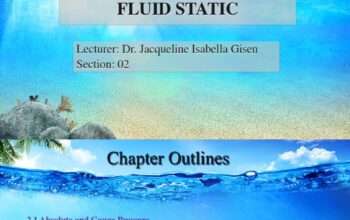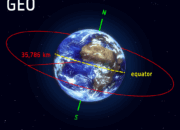Earth’s magnetic field is an intricate and dynamic phenomenon that has puzzled scientists for centuries. Understanding its behavior is essential for unraveling not only the planet’s internal processes but also its interaction with the solar wind and cosmic radiation. This article delves into the complexities of Earth’s magnetic field and raises the query: what happens when this field begins to gather momentum? By exploring the mechanisms behind magnetic field behavior, we examine its implications on both a terrestrial and celestial scale.
The magnetic field of Earth, often likened to that of a gigantic bar magnet tilted at an angle of approximately 11 degrees from the rotational axis, extends far beyond the planet’s surface. The core of our planet generates this magnetic field through the dynamo effect—a theory postulating that the movements of molten iron and nickel in the outer core create electric currents, thus producing magnetic fields. However, challenges arise when considering variations in magnetic intensity and the localized anomalies that occur at different geophysical locations.
Recent studies indicate that Earth’s magnetic field is not only fluctuating but appears to be gathering momentum, especially in regions like the South Atlantic Anomaly, where the magnetic field intensity has notably diminished over the past few decades. Is this decline a precursor to an impending magnetic pole reversal, or a mere anomaly that could correct itself in due course? This playful question invites a broader discourse, reshaping our understanding of geomagnetism and its quintessential nature.
Considering the implications of a magnetic pole reversal—a phenomenon that has happened multiple times throughout geologic history—raises further inquiries. When the magnetic poles do shift, what consequences might this have on Earth’s atmospheric conditions and radiation levels? Reversal events are believed to occur over thousands of years, and while the precise impacts are speculative, current models suggest that during a transition, the magnetic field may weaken significantly. Such a vulnerability could expose the planet to increased solar radiation, posing potential risks to biological life forms and modern technological systems.
This potential weakening of the magnetic field invites an essential challenge. With increasing reliance on technology integrated into every aspect of human life, how will society prepare for the consequences of a turbulent magnetic environment? Would enhanced satellite systems be sufficient to shield against heightened radiation? Or is it imperative to develop an understanding of Earth’s magnetic field transitions, enabling scientists to devise strategies to mitigate their effects?
The myriad questions surrounding Earth’s magnetism underscore the importance of continued research. Scientists track geomagnetic variations using ground-based observatories and satellite missions, such as the European Space Agency’s Swarm, which aims to provide detailed measurements of magnetic field strength and its components. These advancements facilitate a more comprehensive understanding of magnetic field dynamics and contribute to predictive models regarding its future behaviors.
One of the more enigmatic aspects of Earth’s magnetic field involves its interaction with the solar wind—a continuous stream of charged particles emitted by the Sun. This interaction is primarily influenced by the magnetosphere, which originates from Earth’s magnetic field extending into space. A deeper investigation into this relationship reveals intricate dynamics. For instance, solar storms can temporarily distort the magnetic field, leading to spectacular auroras but also presenting challenges such as geomagnetic storms that can disrupt communication systems and navigation tools.
Intriguingly, the study of magnetic phenomena extends beyond Earth to other celestial bodies, allowing for fascinating comparative analysis. For example, the magnetic field of Jupiter, significantly stronger than Earth’s, influences its many moons and potential habitability. Similarly, Mars, having lost its magnetic field billions of years ago, represents a stark contrast, prompting discussions about how magnetic properties contribute to the sustainability of a planet’s atmosphere and, ultimately, its life potential.
Nevertheless, while the scientific community continues to uncover new findings, the quest for clarity regarding Earth’s magnetic field remains a magnetic mystery. Scientific debate prevails over the exact mechanisms driving variations in intensity and configuration. Part of this stems from the model limitations used to simulate core processes and the intricate interactions of magnetic fields within the mantle and crust.
As our understanding evolves, so does the recognition that Earth’s magnetic field is integral not only to life as we know it but also to our perception of Earth’s identity. The question persists: is the current gathering momentum a sign of change or a mere reflection of the field’s inherent complexity? Answers may lie not only within the domain of geophysics but also in the interdisciplinary collaboration that bridges geology, astronomy, and space weather phenomena.
In closing, the study of Earth’s magnetic field and its potential momentum presents both opportunities and challenges. Each investigation leads to further inquiries and a deeper understanding of the dynamics influencing our planet. In a world increasingly reliant on technology and aware of the significance of geomagnetic phenomena, it is essential to approach these mysteries with rigor, curiosity, and an openness to discovery. The playful question posed at the beginning echoes through the scientific journey: as we gather knowledge, how might we adapt and thrive amidst the enigmas of our magnetic universe?












